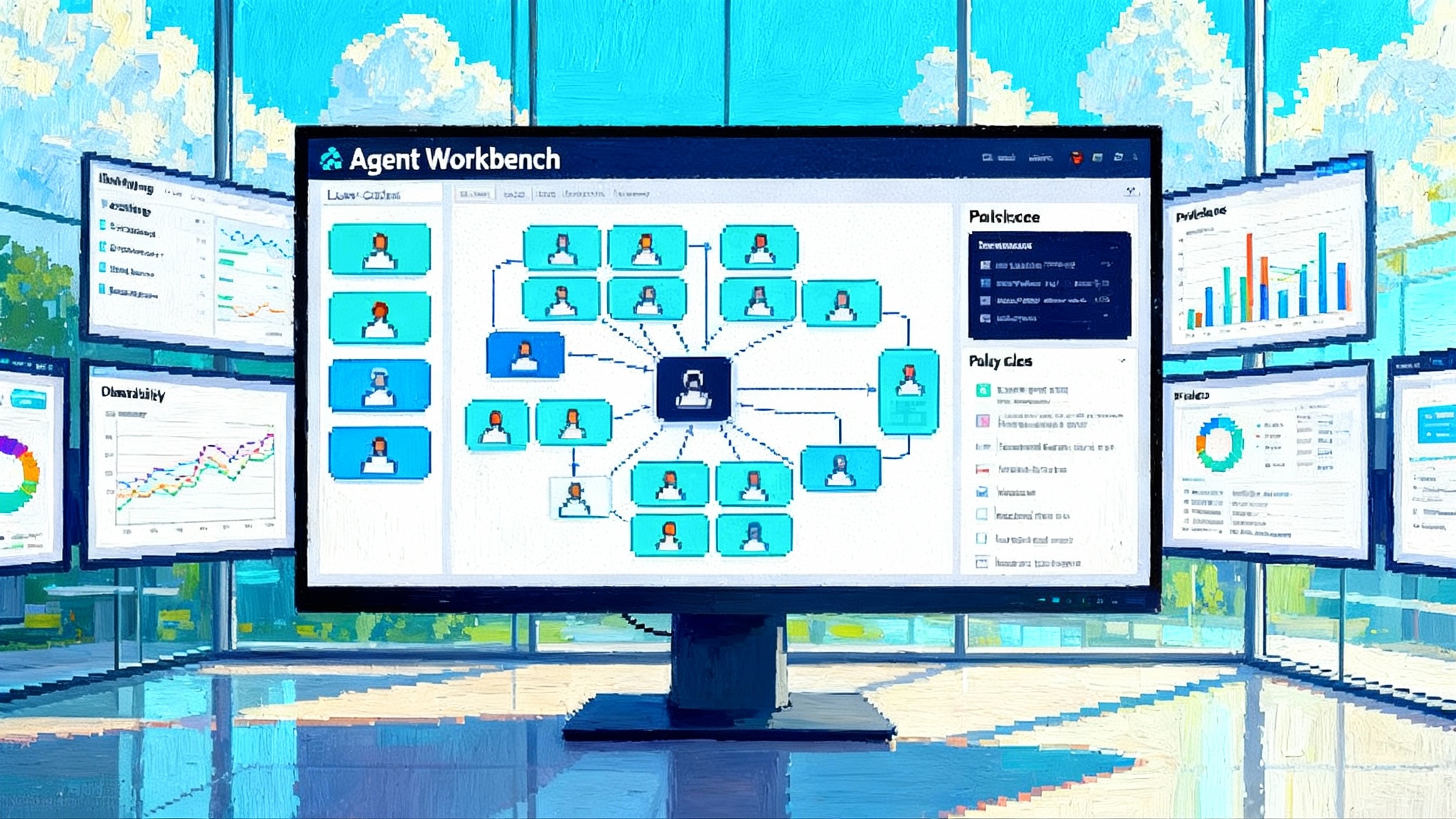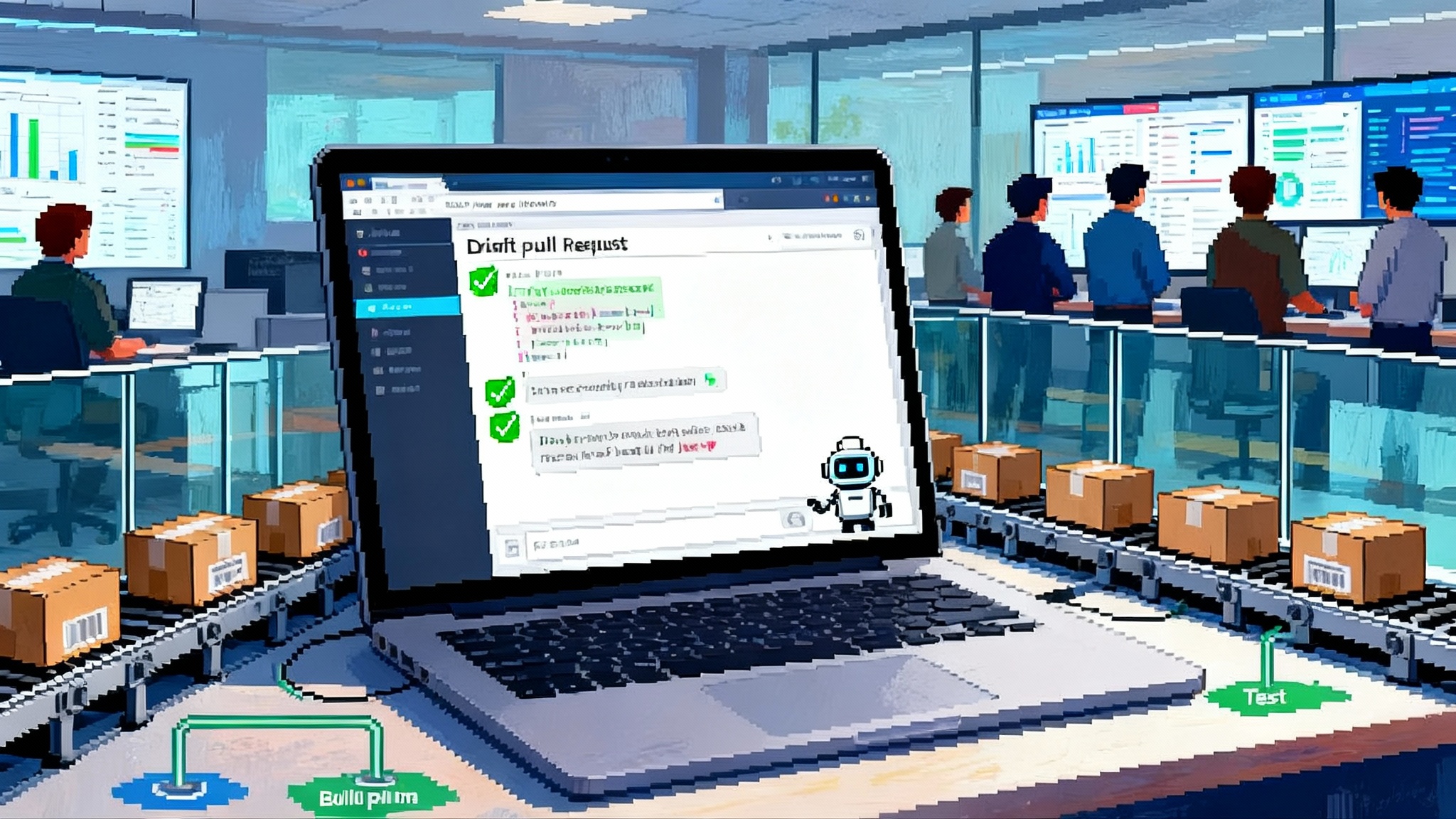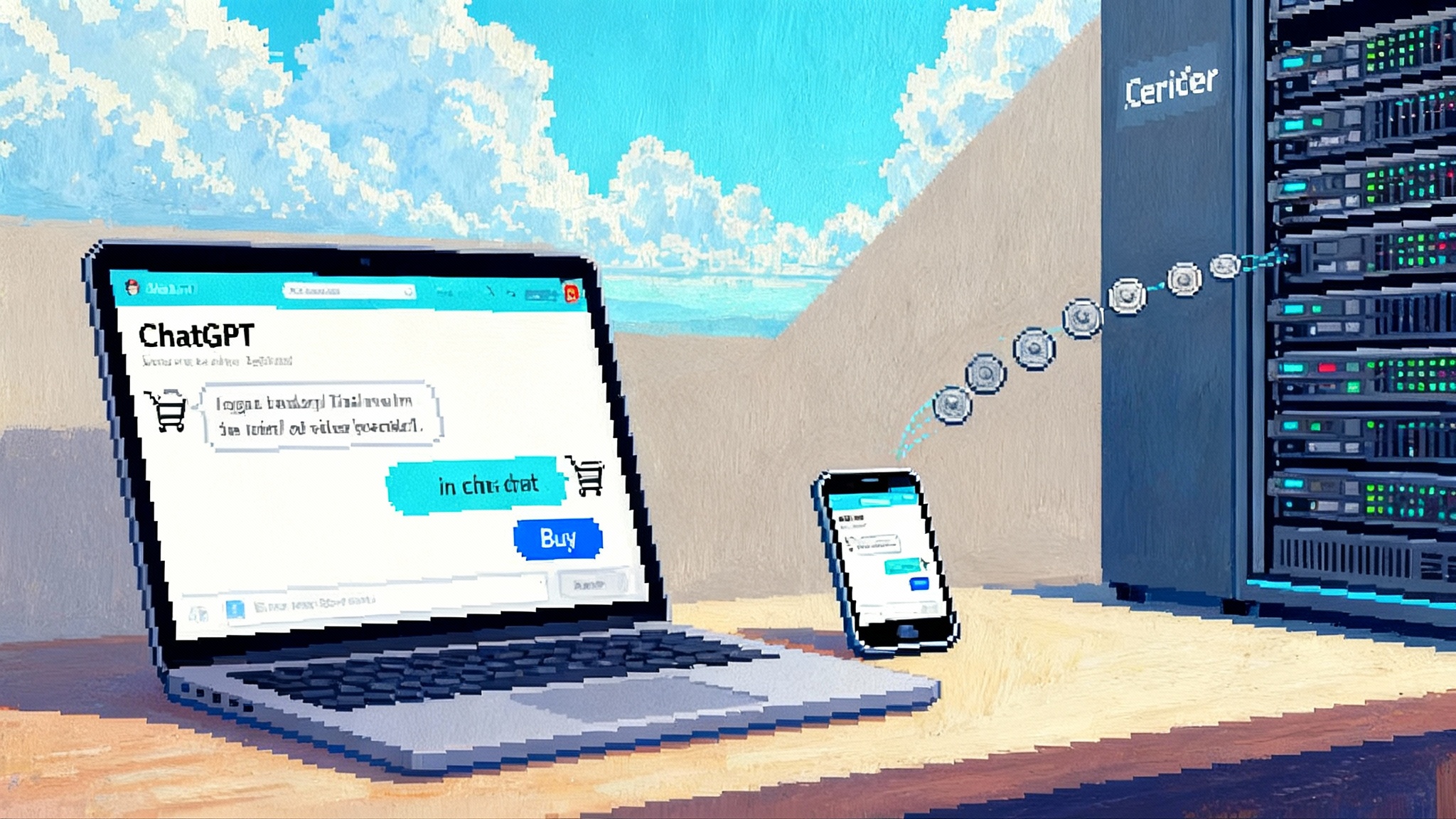Instant Checkout Goes Live: ACP Turns Chat Into Commerce
On September 29 to 30, 2025, OpenAI and Stripe introduced Instant Checkout and the Agentic Commerce Protocol. Learn how ACP standardizes agent to merchant transactions, what changes for Etsy and Shopify sellers, and how to adopt it in 90 days.
Breaking: chat stops talking and starts selling
On September 29, 2025, OpenAI rolled out Instant Checkout inside ChatGPT for United States users, with Etsy sellers live and support for more than a million Shopify merchants on the way. The flow runs on the Agentic Commerce Protocol, a new open standard co-developed with Stripe that defines how agents talk to merchants and payment providers. For the first time, a mainstream agent can recommend a product and complete a purchase without sending the user to a website. OpenAI described single item purchases at launch, with multi item carts and more regions to follow. For the official framing, see OpenAI product note on Instant Checkout.
On September 30, 2025, Stripe confirmed it is helping power Instant Checkout and jointly released the Agentic Commerce Protocol. The pitch from both companies is merchant first. You keep the customer relationship, your catalog, your fulfillment, your payment processor, and your data. The agent becomes a new front door, not a new landlord. Stripe’s view of the collaboration is summarized in the Stripe newsroom post on ACP.
What ACP standardizes, in plain language
Think of ACP as a shared set of traffic rules for three parties at an intersection: the buyer, the agent, and the business. Before ACP, each agent had to negotiate a bespoke route to each store, which did not scale.
With ACP in place:
- The merchant publishes an agent facing checkout configuration and endpoints. This covers what can be sold, how items are represented, price and tax logic, shipping options, and which payment service provider processes the transaction.
- The agent follows a defined sequence to create a checkout session, confirm buyer intent, authorize payment, and receive order status. The steps are explicit and versioned, which makes behavior predictable for everyone.
- The payment provider passes tokenized credentials and returns authorization results to the merchant. The merchant remains the system of record for orders, refunds, taxes, and compliance.
In other words, ACP moves agents from I can tell you where to click to I can complete the purchase on your terms, while keeping the merchant in charge of the store.
From chat to revenue for Etsy and Shopify sellers
Etsy goes first
For Etsy sellers, Instant Checkout turns discovery in ChatGPT into a one tap purchase. If a shopper asks for a handmade ceramic mug for a gift, the agent can surface an item and complete checkout without leaving the conversation. The order still lands in the seller’s Etsy shop manager. Shipping, tax, disputes, and payouts follow the seller’s existing flows. The net effect is a new acquisition channel that preserves the operational backbone merchants already trust.
Shopify is next
Shopify merchants should expect two practical shifts once support rolls out:
-
Agent ready product data. Merchants live or die by their product feed quality. Titles that help a person skim do not always help an agent reason. Clean attributes, consistent variants, and clear return policies begin to matter as much as lifestyle photography. ACP provides a schema for that, and Shopify’s product and policy metadata map cleanly to it.
-
Funnel compression. The distance from recommendation to paid order shrinks from several page transitions to a single in chat confirmation. That turns casual queries into measurable revenue events, especially for replenishment, gifts, and impulse buys under a comfort threshold. Early adopters should monitor conversion lift for traffic attributed to ChatGPT compared with organic search and social.
A fast forming partner constellation
Etsy and Shopify are the marquee commerce names for launch, but a wider orbit is already taking shape. Payments, catalog infrastructure, and developer frameworks see ACP as a lingua franca for agent sales. Expect to see native ACP support in modern commerce platforms, middleware that maps existing product feeds to ACP schemas, and agent toolkits that treat checkout as a first class primitive. As the broader agent ecosystem matures, trends like MCP connectors and opinionated agent runtimes will accelerate adoption. If you are tracking the connector story, our overview of MCP as USB C for agents sets helpful context.
Competing ecosystems are not standing still
When a new on ramp to commerce appears, others lay asphalt. Google has introduced an Agent Payments Protocol aimed at proof of mandate transactions that banks can audit. Amazon is experimenting with agent driven shopping features that sit on top of its marketplace. Card networks and large processors are piloting authorization flows and dispute frameworks designed for agents. ACP’s differentiator is where power sits. Merchants keep control, and agents integrate on merchant terms rather than re hosting the store.
Security, governance, and permissions
Agents moving money raise a simple question: who told the agent it was allowed to buy, and what exactly was it allowed to buy? ACP answers with a layered permissions model:
- Buyer consent is explicit. The agent must present a clear summary of what will be purchased, from whom, at what price, with which payment method, and to what address. The buyer confirms in chat.
- Scope limited permissions. Merchants can limit where an agent may shop in their catalog. Think spend caps, product category allowlists, geofenced shipping, and time boxed windows. If the agent wants to go beyond those permissions, it must prompt the buyer again.
- System of record stays with the merchant. The merchant’s payment service provider, tax engine, and order system remain authoritative. That gives finance and legal teams continuity across fraud, refunds, and audits.
- Accountability. Each step in the checkout sequence is signed, timestamped, and logged. If a dispute occurs, the merchant and payment provider have evidence that a human authorized a specific purchase via the agent under defined constraints.
MCP style connectors and why they matter
Model Context Protocol popularized a way to expose tools and data sources as secure connectors that agents can call. ACP makes room for the same pattern. A merchant can publish ACP endpoints over a standard REST interface, then optionally wrap them in MCP style connectors so agents from multiple model providers can discover and call the same capabilities without custom integration work. Security teams benefit from uniform authentication, explicit scopes, and standard logging across connectors. If you are exploring stronger agent reliability, see how Claude advanced reliability in agents from demos to dependable work.
Data flows, privacy, and tokens
A clean division of responsibilities keeps sensitive data where it belongs:
- The agent never sees raw card numbers. It handles tokens or payment method references returned by the payment provider. This aligns with common PCI DSS boundaries.
- The merchant receives the same order data it would from a hosted checkout. That includes shipping, taxes, and item details, plus agent attribution and consent artifacts.
- The payment provider processes authorization and settlement as usual. Existing rules for 3D Secure, Strong Customer Authentication, and issuer risk models apply.
Fraud and disputes
Fraud does not vanish, it moves. Merchants should plan for two new patterns:
- Mis mandate orders. A buyer claims they did not authorize the agent to purchase the exact item or amount. Mitigation: store and surface granular consent records. Use prompts that echo specific items, prices, and addresses, not generic approvals.
- Context spoofing. A malicious actor tries to guide the agent toward a risky merchant or item. Mitigation: merchant allowlists, category constraints, and agent reputation signals reduce exposure.
In dispute workflows, the merchant remains merchant of record. The merchant submits the same evidence they would today, plus ACP artifacts. Expect card networks to issue playbooks that treat signed agent consent as compelling evidence for certain dispute codes. Chargeback reason codes should map to familiar categories like fraud, product not as described, or services not provided. Return policies remain the merchant’s own.
What changes for developers and operators
The surface area looks familiar, which is the point. You implement a versioned API for checkout sessions, add webhooks for status changes, connect your existing payment provider, and instrument analytics. The new work is teaching your catalog and policies to speak agent. That means better structured data and a careful line between in chat guidance and in store truth. If you need a reference for operationalizing agents in production, see how platform teams make agents production ready.
A short technical checklist:
- Define an ACP compliant checkout session lifecycle: create session, update shipping, compute tax, confirm, complete, cancel.
- Normalize product attributes and variants. Include canonical identifiers, size charts, compatibility notes, and return windows.
- Externalize policy constraints. Support caps by category, regional shipping rules, and exception prompts when thresholds are crossed.
- Log consent events. Persist the rendered summary, item identifiers, price at confirmation, and a tamper evident hash.
- Harden authentication. Use your PSP’s tokens only. Agent endpoints should never accept raw card data.
A 30 to 60 to 90 day adoption playbook
Treat agent commerce like a channel launch, not a science project. Here is a concrete plan for software providers and retailers.
Days 0 to 30: Make your catalog legible to agents
- Inventory the top 500 SKUs by contribution margin and map them to agent friendly attributes. Include dimensions, materials, compatibility, size charts, and return windows. Avoid vague titles. Add canonical identifiers for variants.
- Publish an ACP checkout endpoint in a sandbox. Mirror your existing checkout steps: create session, update shipping, compute tax, confirm, complete, cancel. Keep it simple and deterministic.
- Define policy constraints up front. Set category allowlists, maximum order values per agent, and address rules. Document what requires a second confirmation.
- Instrument attribution. Add fields for agent platform, model name, user consent type, and the version of your ACP implementation so you can analyze conversion by agent context.
- Security review. Ensure your payment flow uses tokens from your provider and that your agent endpoints never accept raw card data.
Success by Day 30: a working end to end sandbox checkout, a catalog slice that agents can reason about, and a risk policy that legal has signed off on.
Days 31 to 60: Wire to production and measure conversion
- Move ACP to production behind feature flags. Start with a small merchant cohort or a subset of your own catalog.
- Add webhooks for order lifecycle. Ensure your fulfillment system will not ship until payment is authorized, and that cancellations or refunds flow back to the agent channel.
- Build a consent ledger. Store each in chat consent event with a hash of the summary, item identifiers, and price at confirmation. This becomes your dispute backbone.
- Create an agent native funnel. Offer Ask an agent at key drop off points in your web store and emails. Route those sessions with deep links that set the agent’s context.
- A or B test agent prompts and copy. Small wording changes in consent summaries can move conversion by double digits. Treat them like checkout experiments, not static legalese.
Success by Day 60: production traffic via ACP, clear dashboards for conversion, fraud, and refund rates by agent channel, and a live consent ledger.
Days 61 to 90: Scale, govern, and optimize
- Expand catalog coverage and policies. Add bundles and subscriptions if your business supports them. Use per category caps and exception prompts for high risk items.
- Train your support team. Write macros that reference agent consent records and explain return policies for agent orders. Create a playbook for disputes that includes ACP evidence.
- Close the loop with lifecycle messaging. After an agent purchase, send shipping and support events that reference the agent interaction and route back to the same channel when possible.
- Partner with a second agent platform. Do not let your learning stay captive to one traffic source. ACP is portable, so use that to your advantage.
- Optimize for replenishment. Add delegate to agent entry points wherever customers reorder on a cadence. Early wins will come from predictable repeat purchases.
Success by Day 90: at least two agent channels in production, sustained conversion uplift for eligible products, stable fraud rates, and a dispute win rate that matches or exceeds your web checkout.
How SaaS platforms can productize this
If you build for merchants, ACP is not just an integration. It is an offering.
- Add an Agent Sales channel in your admin. Surface conversion, refunds, and top products by agent platform. Include controls for category allowlists and spend caps.
- Offer catalog linting. Flag unstructured titles, missing attributes, and ambiguous variant logic that can confuse agents.
- Package starter connectors. Ship an MCP style connector and a REST integration so customers can go live quickly.
- Provide dispute templates. Pre fill evidence packages with consent hashes, item details, and policy links.
Pricing thought: charge a low platform fee plus value based tiers pegged to agent channel GMV or conversion lift. Bundle dispute tooling and consent ledger storage into the higher tiers since these features reduce tangible risk.
Practical metrics to track from day one
- Conversion rate from agent referred sessions to paid orders
- Average order value versus web and mobile
- Time to checkout confirmation from first agent message
- Refund and chargeback rates by agent platform and product category
- Share of repeat purchases initiated by delegate to agent
- Consent clarity score derived from post purchase surveys
Why delegate to agent will start replacing add to cart
Add to cart was built for a world of tabs and lists. Agents compress that world into a conversation where intent, evaluation, and payment happen together. The mechanics favor delegation:
- Less friction. The agent already knows the context. It can resolve sizing, compatibility, and delivery constraints before asking to buy.
- Better timing. Agents can monitor price drops and inventory changes and act when conditions are right.
- More trust when designed well. Explicit consent summaries and clean dispute evidence make buyers comfortable saying yes in the moment.
- Stronger retention. Delegation fits replenishment and planned purchases. The more a buyer trusts an agent to handle repeat tasks, the less they need a cart at all.
Expect the phrase delegate to agent to start appearing beside buy now buttons over the next year. It will begin with repeatable, lower ticket categories, then climb the ladder as consent patterns and dispute norms harden. Merchants that prepare their catalogs, permissions, and metrics now will be ready when that pattern becomes the default.
The takeaway
Instant Checkout and the Agentic Commerce Protocol are not a novelty. They are a pragmatic bridge from today’s stores to tomorrow’s agent driven demand. The bridge is merchant first: your systems, your processor, your policies. In the next 90 days, you can teach your catalog to speak agent, publish ACP endpoints, and prove the conversion lift for yourself. The winners will not be the loudest hype cycles. They will be the teams that make a clear promise to the agent, keep it in their data and flows, and let the results compound.








